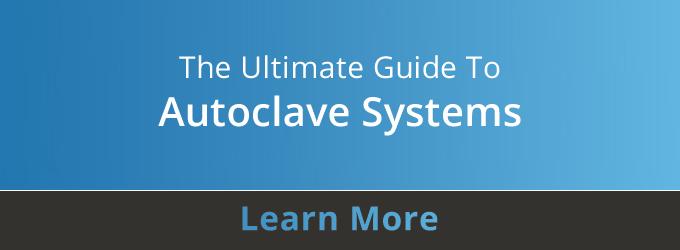Prepare for autoclave door adjustment
Before you can adjust your autoclave door, certain requirements must be met.
Give your system a once-over before proceeding and follow these steps:
- The hinge pin has to be in a vertical position, otherwise, the door won’t balance.
- The square ends of the hinge pin must be centered in the top and bottom hinge brackets.
- If there is any amount of slant or tilt in the autoclave, the hinge pin will need to be adjusted. The hinge pin’s centerline has to be parallel to the door’s face.
- The door and skirt flange faces must meet perfectly without having to use force. If they don’t meet squarely, the hinge pin is either too far forward, too far back, or it’s tilted.
 Steps to adjust your autoclave door
Steps to adjust your autoclave door
It’s important to note that autoclave door adjustment happens at the factory and readjustment shouldn’t be necessary – as long as you’re using your autoclave under normal operating circumstances.
If it does become a need, you must follow the correct autoclave maintenance procedures closely.
Here’s how to adjust your autoclave’s door.
- Close the door and lock it.
- From the autoclave’s interior, with the gasket removed and the door closed, use a feeler gauge to check the space between the door flange face and skirt flange face. For the autoclave to function correctly, this space should be equal all the way around, indicating that the surfaces are aligned and parallel.
- From inside the autoclave, check to make sure the door I.D. and skirt I.D. are concentric.
- Three vertical adjusting screws are provided to allow for up or down adjustment of the autoclave door’s horizontal centerline. These are located on the bottom hinge block or bearing.
- The door pivot adjustment is in the hinge area web plate on the door’s centerline. This allows the door to close without restriction about the vertical axis, i.e., door flange and skirt flange touching at the 9 o’clock or 3 o’clock positions. Loosen or tighten the hex head cap screw, as necessary, for door sealing surfaces to achieve parallel alignment. Tighten check nut to web plate.
- The left and right set screw is located at the top and bottom of the hinge pin and compensates for a sideways concentricity or adjustment error.
- Front and back set screws are located at the top and bottom of the hinge pin. They act as a balance for relative planes of skirt flange and door flange faces for each other on the vertical centerline. (Door in-at-the-bottom and out-at-the-top or vice-versa).
- Compound adjustment of four top and four bottom set screws (left and right, front and back) may be required to achieve accurate autoclave door adjustment.
- Don’t try to compensate for incorrect alignment in two directions at once.
- To remove the door for internal access during production, be sure to put a support under the hinge pin and secure the door with a crane. Back off two set screws, 90 degrees apart top and bottom, and remove the hinge pin. Unlock the door and remove it by crane. Make sure the door flange face is protected from damage as this is a machined surface. Any damage to this face can have serious negative repercussions on the autoclave’s ability to seal under pressure.
Keep up with autoclave maintenance
Door adjustment can be one part of an autoclave maintenance routine.
Follow the steps and procedures laid out here to make sure the adjustment is done correctly and your autoclave continues to function as efficiently as it should.

Author: Jeffrey Lippincott
 Steps to adjust your autoclave door
Steps to adjust your autoclave door